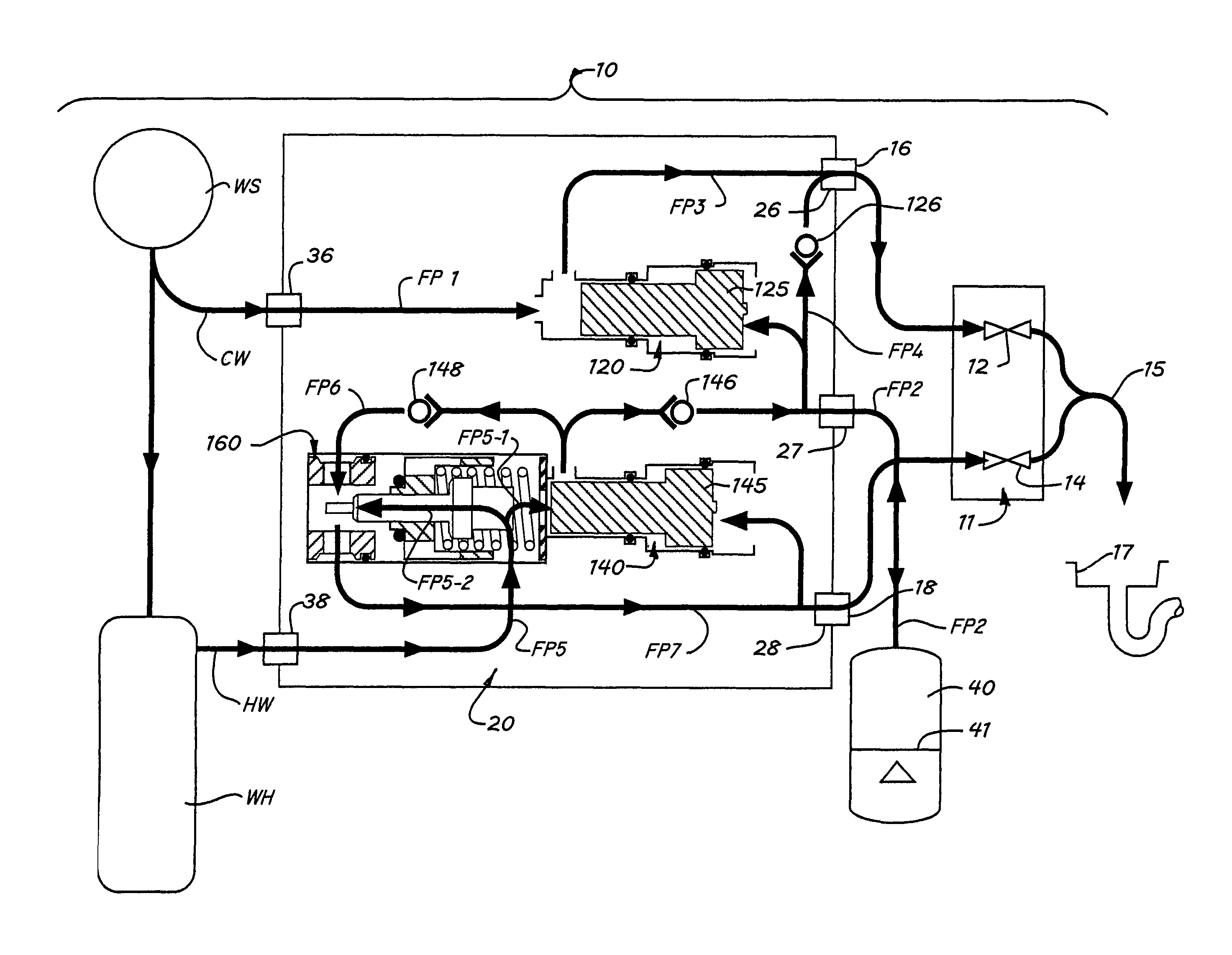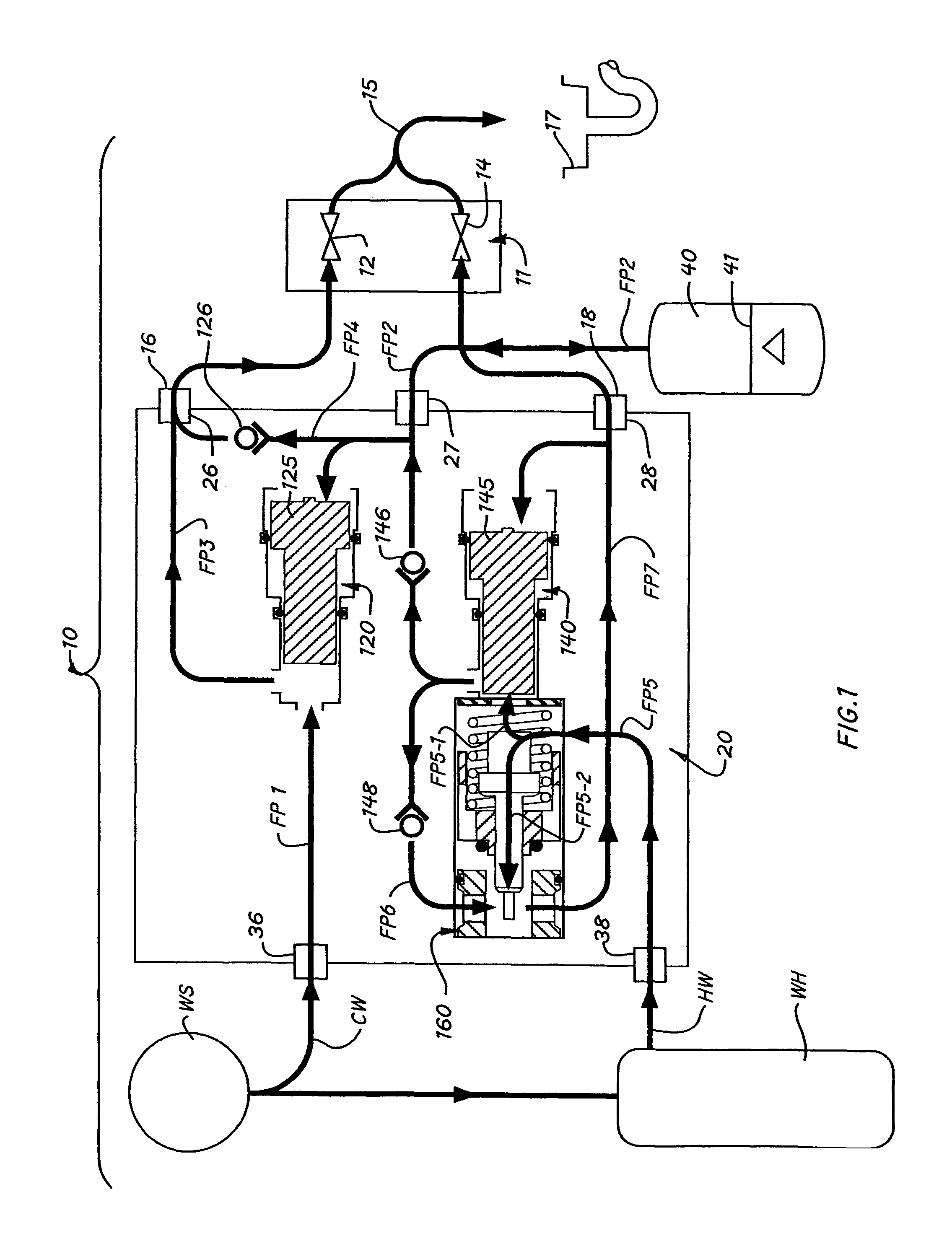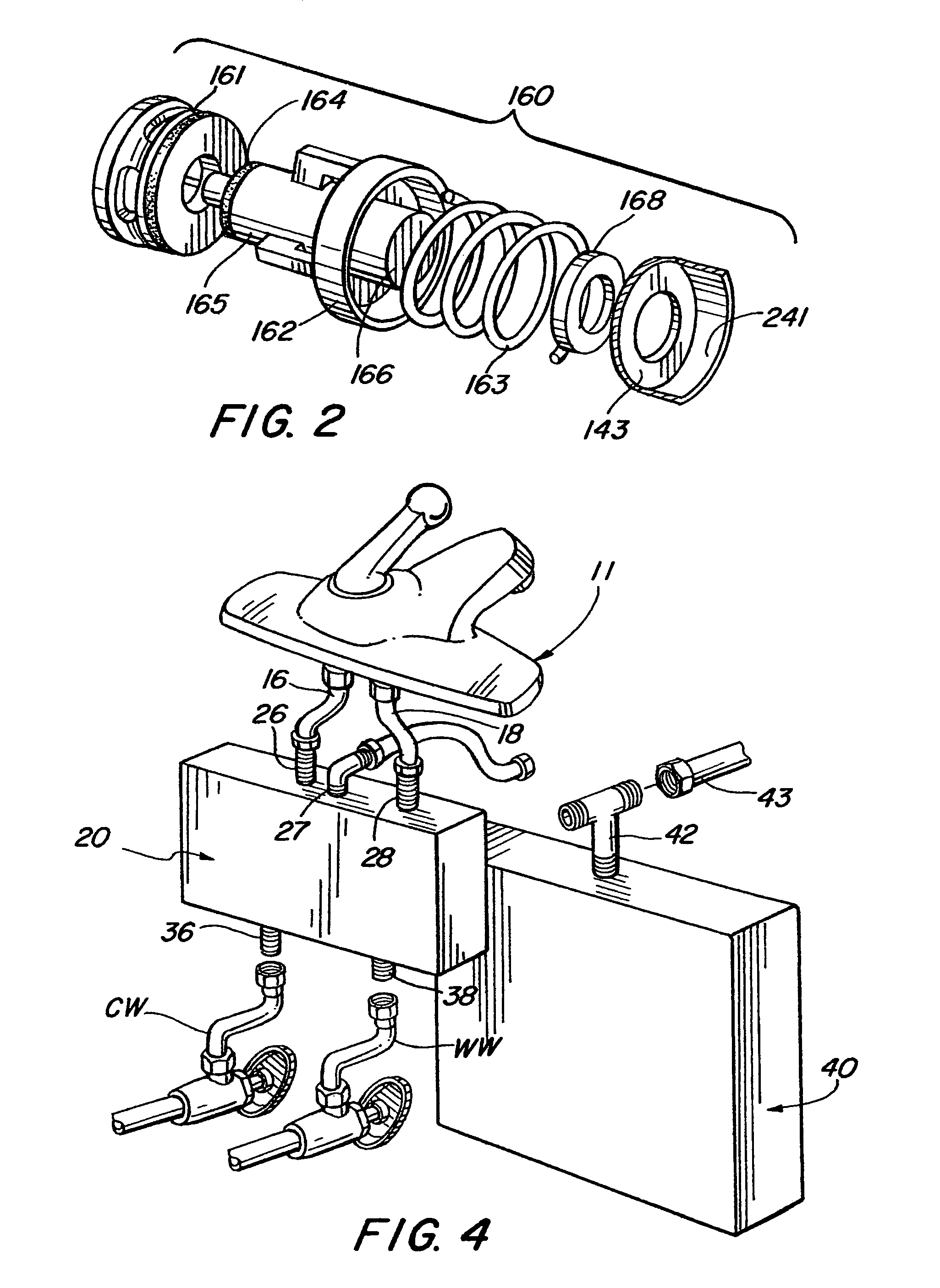Method and apparatus for conserving water
a technology of water conservation and water flow, applied in water supply installation, process and machine control, instruments, etc., can solve the problems of large losses, significant waste of fresh water, and limited water supply in most municipal growth areas, so as to reduce the potential for filling and waste, reduce the accumulation of water, and minimize waste
- Summary
- Abstract
- Description
- Claims
- Application Information
AI Technical Summary
Benefits of technology
Problems solved by technology
Method used
Image
Examples
Embodiment Construction
[0027]As shown in FIGS. 1-4, the inventive water conservation system, generally designated by the numeral 10, comprises a conventionally implemented faucet assembly 11 provided with a cold water valve 12 and a hot water valve 14 each conventionally conformed for connection by known water tight connectors 16 and 18 either directly to the local water supply WS or to the outlet of a conventional water heater WH that form the corresponding cold water and hot water plumbing branches CW and HW running through a household. By well known conventional practice valves 12 and 14 are either coordinated for operation by a single, manually articulated lever or by individually associated mechanisms that control the flow therethrough into a common outlet 15.
[0028]Of course, ordinary prudence demands that all excess flow from each faucet assembly be confined by a tub, sink basin, shower pan or the like, and conveyed through a drain 17 into the sewer. In conventional practice this excess flow also in...
PUM
 Login to View More
Login to View More Abstract
Description
Claims
Application Information
 Login to View More
Login to View More - R&D
- Intellectual Property
- Life Sciences
- Materials
- Tech Scout
- Unparalleled Data Quality
- Higher Quality Content
- 60% Fewer Hallucinations
Browse by: Latest US Patents, China's latest patents, Technical Efficacy Thesaurus, Application Domain, Technology Topic, Popular Technical Reports.
© 2025 PatSnap. All rights reserved.Legal|Privacy policy|Modern Slavery Act Transparency Statement|Sitemap|About US| Contact US: help@patsnap.com



